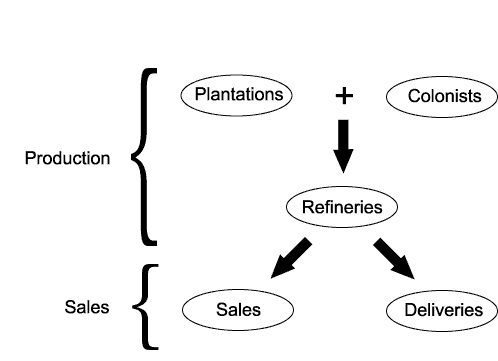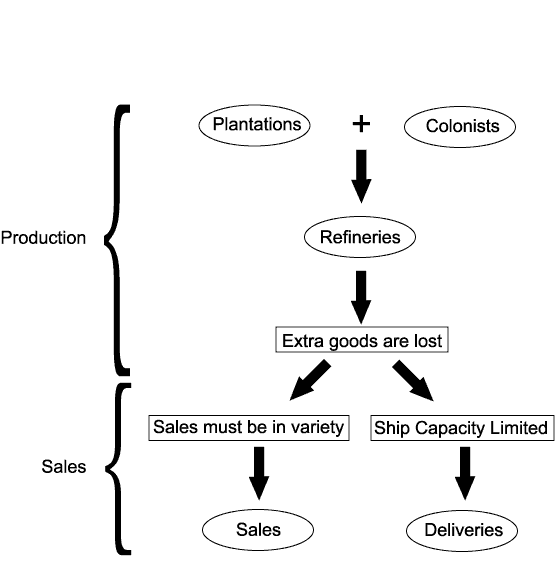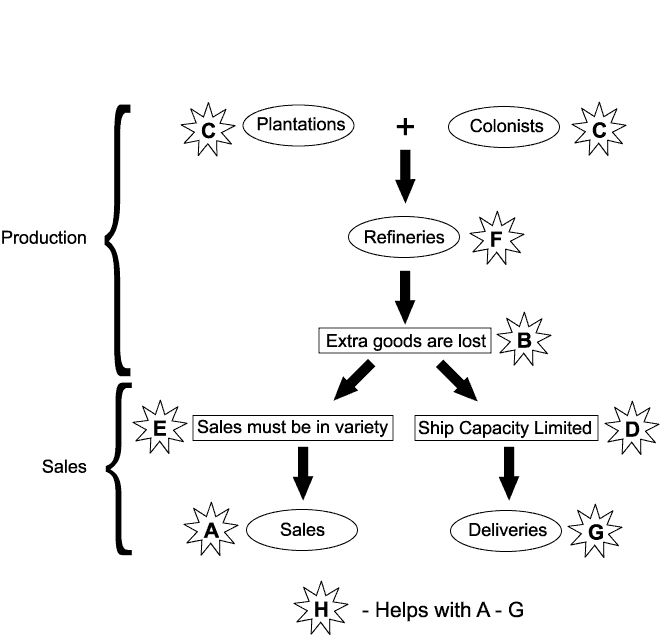
The player activities are divided into two phases, Production and Sales.
Puerto Rico features a great wealth of different types of
buildings, plantations and roles.
How can one begin to get a handle on all of the different possibilities?
Well, let's start with the basic flow of the game, representing it as follows:

The player activities are divided into two phases, Production and Sales.
The basic flow is that Plantations and Colonists create production, which must be Refined. (Corn, which actually does not need to be refined, is treated here as having a very trivial refinement process.)
The Sales Phase shows production going in two possible directions, one being sales to produce cash (the Trader) and the other sales to produce victory points (the Captain).
Now into this simple flow the game throws some artificial obstacles, represented by rectangles
below.
It could be argued that there are other obstacles.
For example, the fact that a player cannot produce,
sell or ship infinite amounts are obstacles as well,
but as they are not generally considered such, are not considered here.

The obstacles then are three otherwise unnecessary rules:
(1) when shipping, except for one, any goods not shipped are lost;
(2) when trading, one cannot trade a good already traded and still extant;
(3) when shipping, the ships only hold certain commodities and of limited amounts.
Now what about all of these buildings a player can buy? To enumerate them and their benefits:

How interesting that, except for one, each type of building helps the player with, or enhances, a single stage or obstacle. The only one which does not, H, the Construction Hut, helps with acquisition of quarries, a meta-item which helps one to acquire buildings A-G.
Also . . .
This has been more a design analysis than a strategic analysis, but see the 1001 Nights section for something more in the vein of the latter.